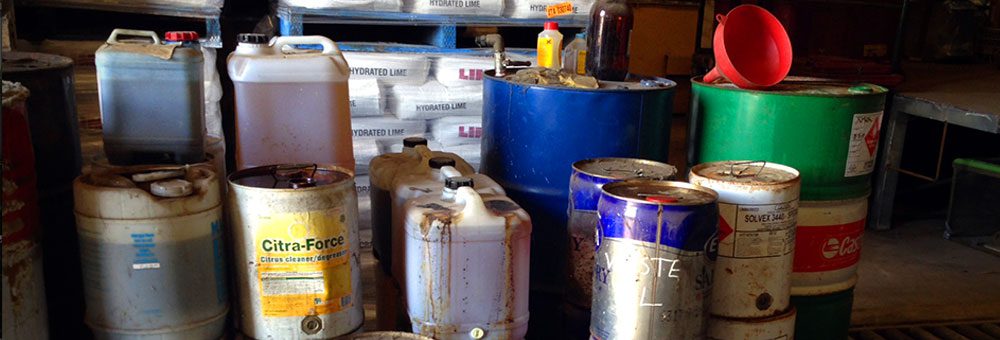
Each industry has its own unique hazardous wastes and materials that it produces. Each bi-product of the business has a specific way that it should be handled for proper biomedical disposal. It may seem like common sense that each industry has its own wastes, but have you ever considered just how much waste each industry is creating?
Carpentry and Floorwork
Acetone, adhesives, coatings, methylene chloride, methyl ethyl ketone (MEK), methyl isobutyl ketone (MIK), mineral spirits, solvents, toluene, treated wood, trichloroethylene, and xylene.
Paint Preparation and Painting
Acetone, chlorobenzene, glazes, methanol, MEK, methylene chloride, oil-based paint, petroleum distillates, pigments, solvents, stripping compounds, toluene, and wastewater.
Construction and Surface Preparation
Acetone, alcohols, metyl ethyl ketone, methyl isobutyl ketone, methanol, methylene chloride, mineral spirits, oxalic acid, petroleum distillates, toluene, 1,1,1-trichloroethane, volatile organic compounds (VOCs), and xylene.
Buffing Coating for Leather Manufacturing
Alcohols (methanol, ethanol, propanol, butanol, diacetone alcohol), chromium in leather dust, esters (ethyl, propyl, and butyl acetates), glycol ethers (butoxyethanol and propoxyethanol), ketones (methyl isobutyl ketone, acetone, cyclohexanone, di-isobutyl ketone), methyl ethyl ketone, solvent overspray, solvent still bottoms, toluene, volatile organic air emissions and xylene.
Degreasing, Parts Washing, Rust Removal for Motor Freight
Ammonium hydroxide, benzene, chromic acid, hydrobromic acid, hydrochloric acid, hydrofluoric acid, methylene chloride, mineral spirits, nitric acid, oil or grease, petroleum distillates, phosphoric acid, potassium hydroxide, rags containing solvents or grease, sodium hydroxide, sulfuric acid, toluene, toxic metals, volatile organic constituents, wastewater, and sludge.
Ink in Lithography, Letterpress, Screen Printing, Flexography, and Gravure
Waste ink with chromium, barium, and lead content; and waste ink contaminated with cleaning solvents, such as trichloroethylene, methylene chloride, 1,1,1-trichloroethane, carbon tetrachloride, 1,1,2-trichloroethane, 1,2,3-trifluoroethane, chlorobenzene, xylene, acetone, methanol, methyl ethyl ketone (MEK), toluene, carbon disulfide, or benzene.
All industries use some type of hazardous material. It is important to understand what hazardous materials are being used and to have a plan in place for handling hazardous wastes. Unless you are properly trained, it is unlikely that you and your business would know how to properly handle hazardous waste properly and it may be best to invest in biomedical disposal services. Protect yourself, your company and the environment and get professional training.
